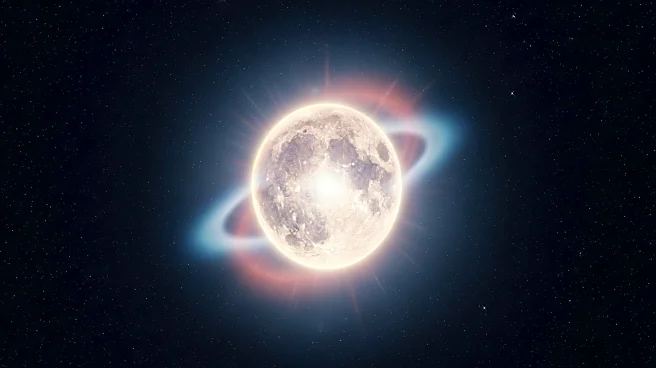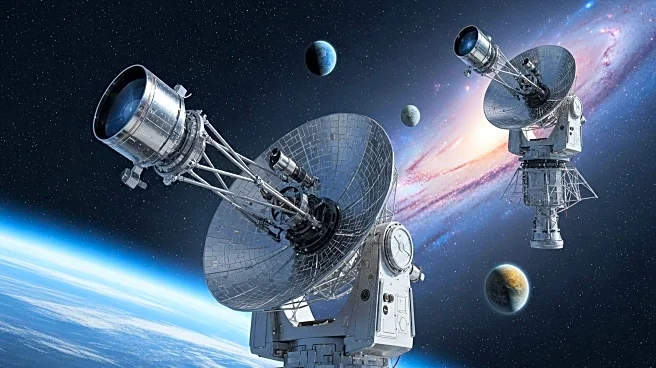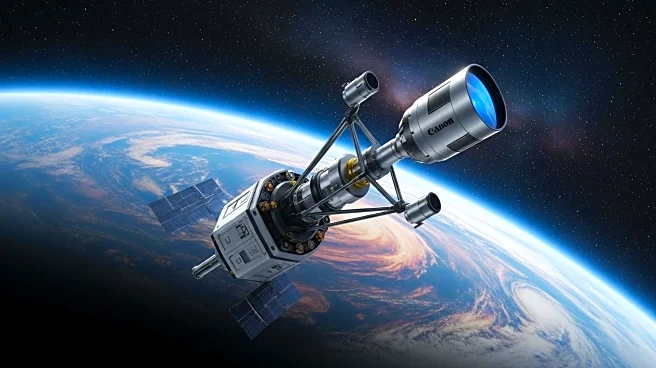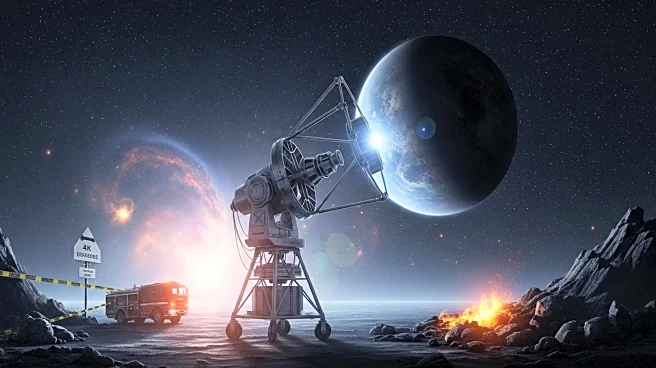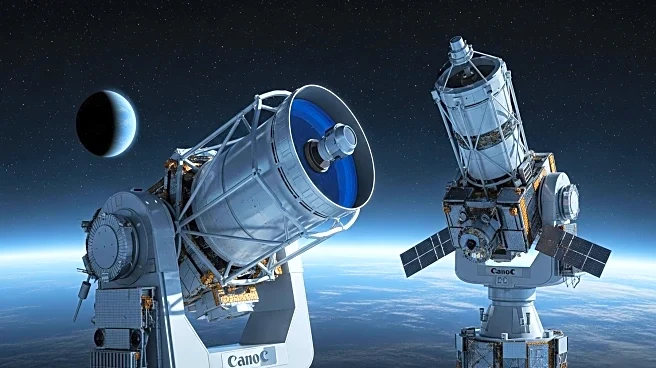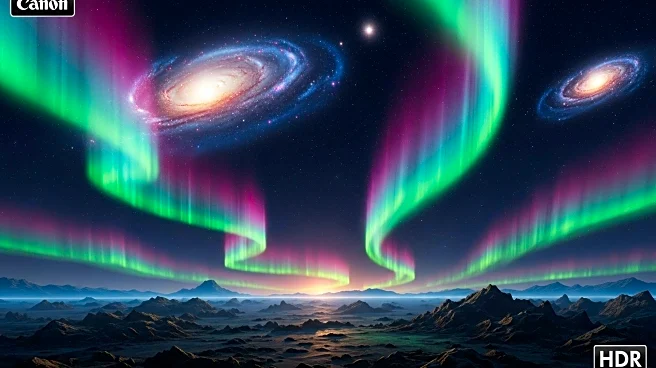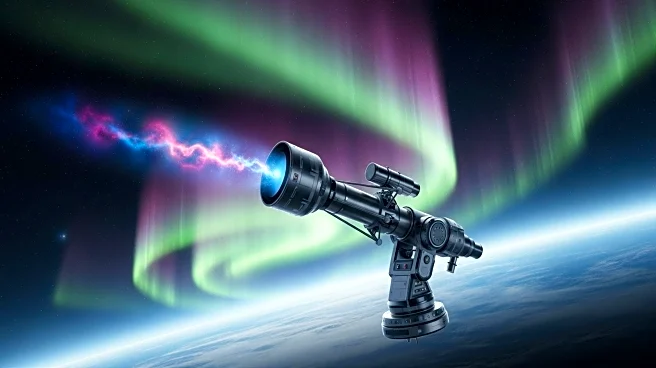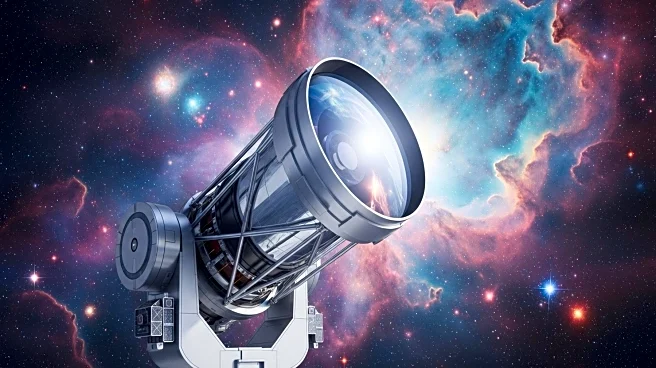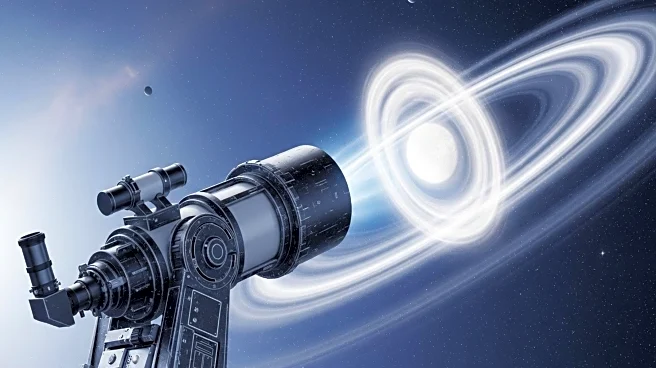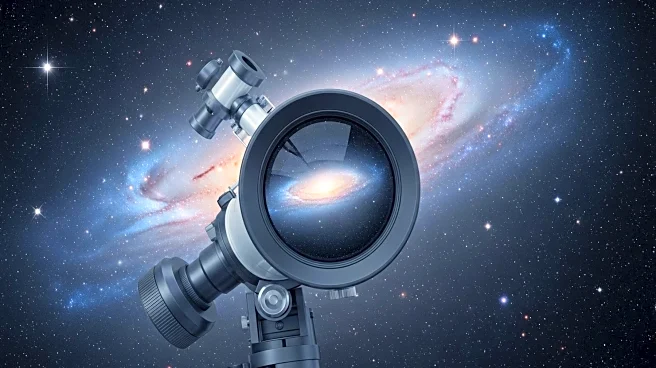What's Happening?
Scientists have discovered a rogue planet, Cha 1107-7626, consuming gas and dust at an extraordinary rate of six billion tons per second. Located in the Chamaeleon constellation, this planet is not bound to any star and is growing rapidly through accretion. Observations from the European Southern Observatory's Very Large Telescope (ESO's VLT) and NASA's James Webb Space Telescope reveal a rich, evolving system with signs of active accretion. The planet's growth is driven by its magnetic field, a process previously observed only in stars.
Why It's Important?
The discovery of Cha 1107-7626's rapid growth challenges existing models of planetary formation and accretion. It suggests that rogue planets can exhibit star-like behaviors, blurring the line between stars and planets. Understanding these processes can provide insights into the early stages of planetary formation and the dynamics of free-floating planets. The study also highlights the potential for strong magnetic fields in low-mass objects, influencing accretion events.
What's Next?
The upcoming Extremely Large Telescope (ELT) will enable astronomers to detect and study more rogue planets, helping to uncover their star-like characteristics. This could lead to a deeper understanding of the formation and evolution of planetary-mass objects. The findings may also prompt further research into the role of magnetic fields in planetary growth and the chemical changes in accretion disks.
Beyond the Headlines
The discovery raises questions about the nature of rogue planets and their potential to host complex systems. It emphasizes the importance of advanced telescopes in revealing the hidden dynamics of the universe. The study also challenges existing models and suggests new avenues for research in planetary science.

